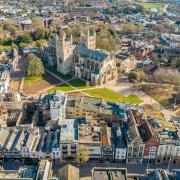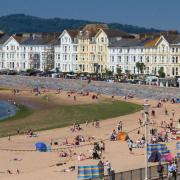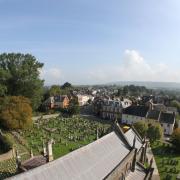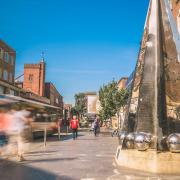From naval figureheads to Marlene Dietrich’s shoes, museums in Devon have something for everyone

I can remember, as a young child, the thrill of visiting a museum. There would be display cases packed with stuffed animals and birds, drawers of magnificent minibeasts pinned in neat rows and always an exhibit to be approached with caution... like an Egyptian mummy, something strange floating in a specimen jar or a stuffed brown bear ready to pounce.
Museum’s today are no less fascinating, but they are much less intimidating (unless that’s because I’m older!) The Box in Plymouth is a multi-million building which retains the façade of the old city museum but has a new light-filled, glass-walled extension. In Exeter, the wonderful Royal Albert Memorial Museum had a refurbishment in 2011 to bring its Victorian facilities into the 21st century.
As well as the household names of the museum world, Devon has its fair share of quirky places to visit – many of them dedicated to one subject – that make for interesting places to visit.

One of my favourites is the Bill Douglas Cinema Museum on the Exeter University campus. Bill Douglas (1934-91) was a really important British independent filmmaker whose love of cinema extended to collecting ephemera and memorabilia with his friend, Peter Jewell. Regarded as one of the best collections of its kind in Europe, it was donated to the university after Bill’s death and opened in 1997.
Film fan Phil Wickham, curator of the museum, says there are exhibits which date back to the very early days of cinema.
“We have early magic lanterns and shadow puppets from around the world, and an original Lumiére Cinématographe from 1895, one of only 150 or 200 ever made,” says Phil, proudly. “The collection had over 50,000 really nice objects and after Bill died it was donated to the university. Peter is still alive and well and living in Barnstaple and still bringing me stuff.
“The university was happy for it to be a free public museum and to share the collection, and be the start of something which will grow. We now have 80,000 items and rising. It’s the leading moving image museum in the UK in terms of depth and breadth and it also serves as a research and study resource.”
The collection has some real gems and also attracts donations from members of the public including a pair of shoes worn by Marlene Dietrich, a prize in a competition in a 1937 fan magazine. “The lady who won them was only 13 at the time so she used her mother’s name to enter,” says Phil. “It’s wonderful to have such amazing things in the museum and there is always a story behind them.
“The museum is always evolving and there are new things and changing exhibitions all the time. We are looking at growing it and doing other cultural things and it’s wonderful that everyone has access to it.”
When it’s raining in Devon there’s still plenty to see for families.
Hannah Bradbury is somebody else lucky enough to turn a private passion into a career.
“My nan was a teacher so every day out was educational,” she laughs as she recalls visits to the Plymouth museum and seeing all the city’s Tudor buildings. Hannah studied history and spent years volunteering at museums close to home in Salcombe and Dartmouth while working in a supermarket to make money.
“I worked in Tescos to enable me to do my MA and volunteered in museums on my day off. I was really lucky when I found the right job at the right time,” she says. The “right job” was as curator at the Devonport Naval Heritage Centre in Plymouth, despite having no connections to the Royal Navy.
“I liked the fact that it was about ships and the sea because I’ve always lived near the water and I care about preserving artefacts and heritage,” says Hannah. “The museum was set up 50 years ago and was only volunteer run. Now we are putting extra money in to develop it over time. We tell the story of the Navy and the Dockyard, both so important to Plymouth’s history and its character.
“We are making changes here. We started a changing exhibition programme and we are looking afresh at the exhibits. When you see a medal, you can learn the amazing story behind the person who received it. There are lots of interesting exhibits. We go back to the age of sail, we have paybooks that date back to the 1800s, and we have items from the two World Wars.”
And this museum offers a link between old and new. The Devonport Naval Heritage Centre’s once neglected collection of ship’s figureheads has been restored at a cost of £1 million and now takes pride of place at the entrance to The Box.
Other magical museums:
Morwellham Quay – step back in time to when this was a thriving port and copper mine with a forge and lime kilns. Lots of things to do for youngsters including a Victorian School and dressing up. Close to Tavistock.
Dartmoor Prison Museum - adjacent to Dartmoor Prison in Princetown. See 200 years of history at the jail which has housed Napoleonic prisoners and French and American PoWs.
Dingles Fairground Heritage Centre - a magical destination in Lifton which offers all the fun of the fair. Carousels, dodgems and other fairground rides beautifully restored.
Museum of Dartmoor Life - from the prehistoric Moors to the early 20th century including a replica of a Bronze Age hut. The museum is in the centre of Okehampton.
Have you joined the Devon Life Facebook page yet?



























